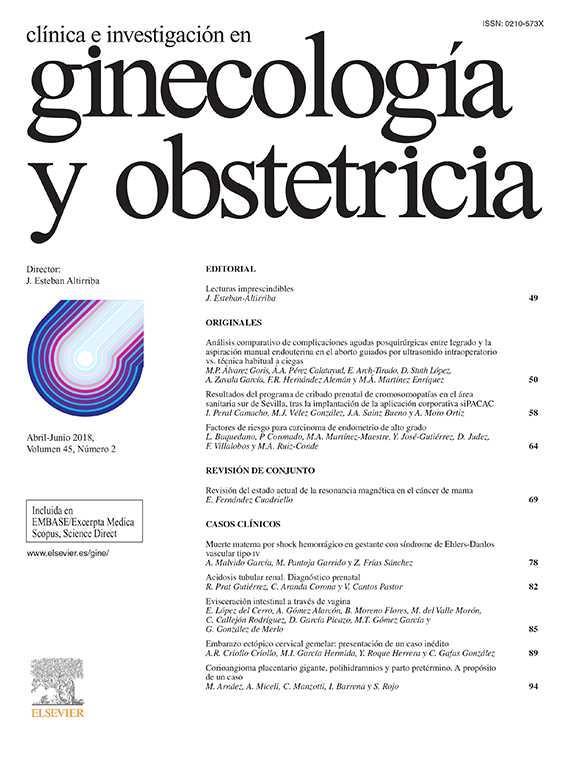La vigilancia fetal intraparto se basa en la monitorización de la frecuencia cardíaca fetal, monitorización de la saturación de oxígeno fetal mediante pulsioximetría y en el estudio del equilibrio ácido-base de sangre fetal.
En el presente estudio, proponemos un nuevo sistema analizador clínico portátil del equilibrio ácidobase. Para ello estudiamos 65 muestras de sangre fetal en diferentes momentos del parto y en sangre de cordón umbilical y comparamos los resultados de dicho sistema con los de los aparatos anteriormente utilizados en nuestro centro, observando que éstos son prácticamente intercambiables para los parámetros pH, pO2 y pCO2, con coeficientes de determinación (r2) excelentes, sin encontrarse diferencias estadísticamente significativas. Concluimos que las ventajas que presenta el nuevo aparato son: menor coste económico, mayor comodidad y disponibilidad, seguridad para el personal sanitario al manipular sangre contaminada y menor cantidad de muestra necesaria para el análisis
Intrapartum foetal monitoring is based on foetal electrocardiogram, foetal arterial oxygen saturation, with pulse oximetry and foetal scalp pH.
In this study, we propose a new system for analysing foetal pH. We studied 65 foetal scalp blood samples at different times during labour, and umbilical cord blood. We then compared the results of the new system with that used in our hospital, observing that the results are practically interchangeable for the following parameters: pH, poi, and pCO2, with excellent determination coefficients (r2) with no significant differences found. We conclude that the advantages of the new analysing system are: more economical, greater availability, safer for staff handling contaminated blood, smaller blood sample needed for the determinations.






